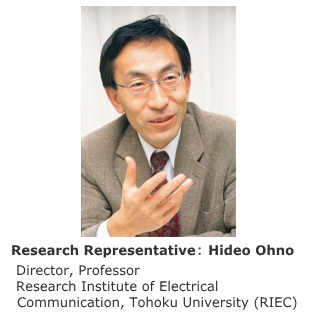Overview

So far, the performance of working memory has been improved by scaling down the feature size of semiconductor devices. However, since it is difficult to reduce device dimensions down to 20 nm or less, which will become necessary in the near future, we have to find a novel way to overcome the limitation of the current technology.In addition, countermeasures for soft errors in semiconductor devices such as those caused by radiation (environmental tolerance) are also required.
One solution to these problems is to use nonvolatile working memory based on spintronics memory devices.The use of spintronics device-based nonvolatile working memory greatly reduces the power consumption of the entire system, which leads to the long life and high-performance operation of the backup battery-powered system.Furthermore, it becomes possible to construct a system that does not require data re-loading during recovery from power outage because the data for processing information and operations are stored in the nonvolatile working memory.Also, we can take advantage of environmental tolerance in the future sub-nanometer era because of the excellent radiation hardness of magnetic storage devices.By developing nonvolatile working memory and applying it to a highly dependable computer system, we will make it possible to construct fundamental technologies for realizing a disaster-tolerant computer system, thus helping to strengthen the disaster tolerance of ICT infrastructures.
To realize a computer system with nonvolatile working memory, in this project, we develop the devices and materials technology for high speed, large capacity, and environment-tolerant sub-20-nm nonvolatile spintronics memory devices for each hierarchy of working memory. We also investigate the effect of the developed technologies on a computing system by means of simulation. This research and development is being carried out by a team that includes Tohoku University and local companies that were affected by the Great East Japan Earthquake. Our objective with this work is to contribute to the promotion of international research, development capabilities, and industrial force in the region.